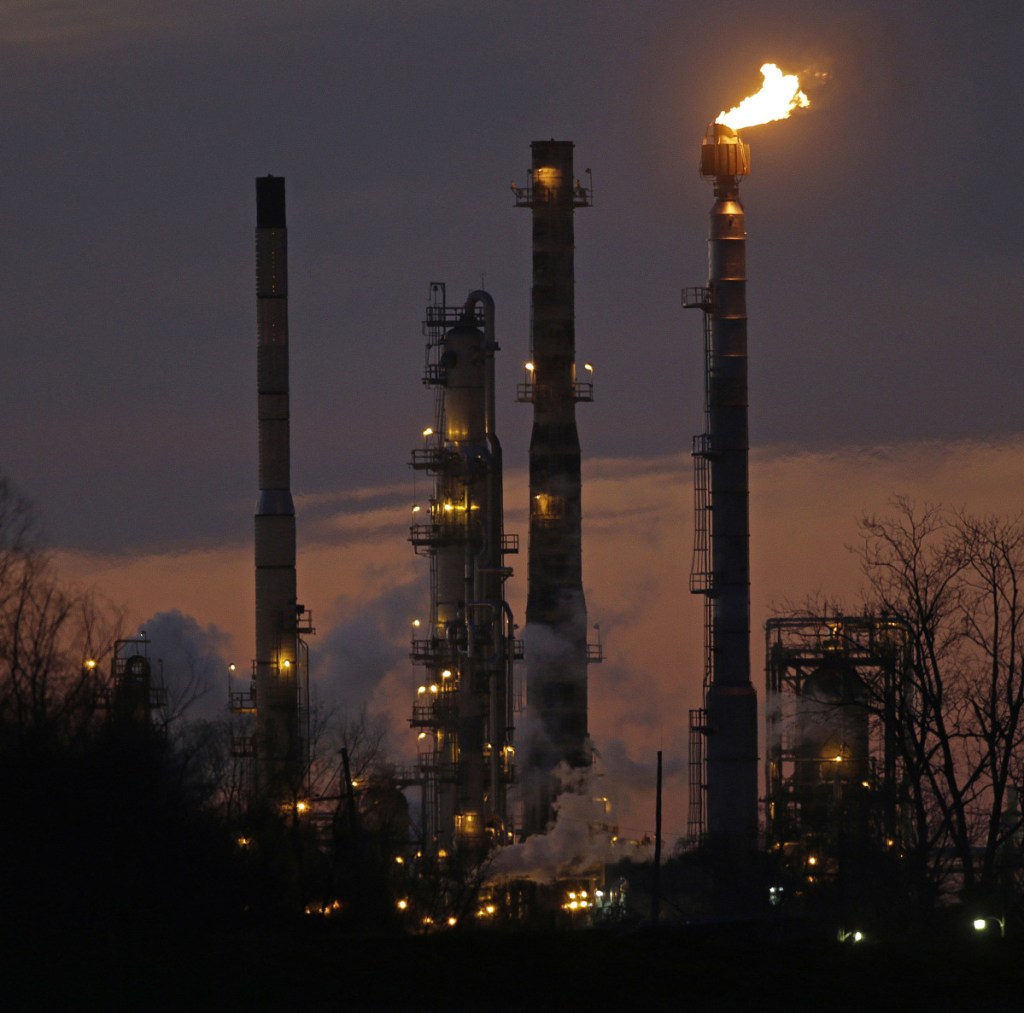Things haven’t been this bad for the world’s biggest oil stock since Ronald Reagan became president. And 2019 may not be much better.
Exxon Mobil, down 22 percent for the year, is headed for its worst annual performance since 1981, when the U.S was in recession and a 20-year crude glut was just beginning. The decline comes as Exxon pursues one of the largest restructurings in its modern history, a seven-year, $200 billion push for oil in South America and natural gas in Mozambique and Papua New Guinea.
With one of corporate America’s strongest balance sheets, the concern isn’t whether Exxon can fund the rebuild. The question from investors: What can you do for me in the meantime? The awkward answer may be “not much,” at a time when oil prices are plummeting.
As rivals restrain growth and buy back stock, Exxon is the one “with the bull’s-eye on their back,” said Mark Stoeckle, who manages $2.6 billion including Exxon shares at Adams Express Co. “They weren’t terribly efficient in the last cycle. What do they do differently? This time it has to work.”
That may be more difficult with Venezuela making aggressive naval maneuvers targeting the company’s ships in Guyana, where Exxon is pursuing one of its much-needed sources of new oil production. Perhaps more importantly, oil prices in New York have fallen more than 40 percent since reaching a high of $76.41 on Oct. 3.
It’s a double-edged sword for the architect of the restructuring, Chief Executive Officer Darren Woods.
On one side, it validates his strategy to build lower-cost oil and gas assets abroad that can withstand the uncertainties that come with the shale boom, as well as the transition to cleaner energy sources. On the other, it puts him at odds with investors who, seeing the uncertainty, want companies to return as much profit to shareholders now as possible.
Royal Dutch Shell Plc, for instance, is down less than 10 percent for the year after stepping up its buyback program at the end of October, when oil prices were still high. The company said it will repurchase $2.5 billion of shares, compared with $2 billion in the previous tranche. Exxon has made no similar effort.
COMPANY HAS ‘longest view’
Exxon has “the longest view of any company,” said Stoeckle, who supports Woods’s strategy. “Investors need to either ignore them or come to grips with the fact they’re going to do what they’re going to do, and stop complaining.”
Exxon’s problems largely stem from flag-planting deals made at the peak of commodity prices over the past decade. Exxon spent $35 billion on U.S. shale gas producer XTO Energy Inc. in 2010 when the real money was to be found in shale oil. It invested $16 billion in Canadian oil sands since 2009, only to de-book much of the reserves. Meanwhile, former CEO Rex Tillerson’s 2013 exploration pact signed with Russia was caught behind a wall of sanctions and later abandoned.
The history of Big Oil shows that when faced with declining production, executives tend to bulk up with mergers or acquisitions. But Woods’ answer is to go back to basics: buy or discover what he believes to be the world’s biggest and lowest-cost resources, develop and operate them, and then move the resulting oil and gas into Exxon’s global refining and chemicals supply chain.
The five key development areas – deepwater oil in Guyana and Brazil, liquefied natural gas in Mozambique and Papua New Guinea and shale oil in the U.S. – were not in Exxon’s portfolio in 2014. Woods says they will generate half of upstream earnings by 2025.
WAITING TO BEAR FRUIT
Shale oil holds the most promise for the short-term. Exxon this year overtook its rivals to become the most active driller in the prolific Permian Basin, where the company has said it shale wells can make double-digit returns with oil at just $35 a barrel. Still the 40 percent drop in oil prices since October have pushed oil sold in New York below $45, leaving less and less room for profit.
Meanwhile, investors are worried the projects abroad will take years to fully develop. “I’m not sure how much of the market is moving on a 20-30 year time horizon,” Woods said in an interview in May. “There’s a little bit of a disconnect between how the market thinks about the business and values it in the time frame that it’s using, versus what we have to do internally.”
Exxon’s production of 3.65 million barrels a day in the second quarter was the lowest in a decade.
Copy the Story LinkSend questions/comments to the editors.



Success. Please wait for the page to reload. If the page does not reload within 5 seconds, please refresh the page.
Enter your email and password to access comments.
Hi, to comment on stories you must . This profile is in addition to your subscription and website login.
Already have a commenting profile? .
Invalid username/password.
Please check your email to confirm and complete your registration.
Only subscribers are eligible to post comments. Please subscribe or login first for digital access. Here’s why.
Use the form below to reset your password. When you've submitted your account email, we will send an email with a reset code.